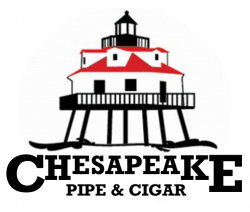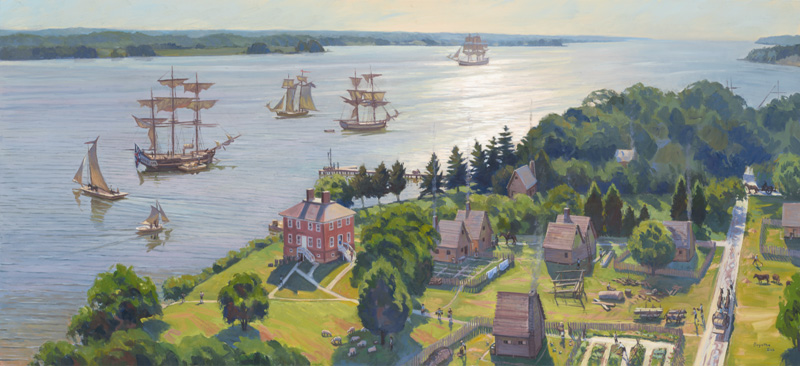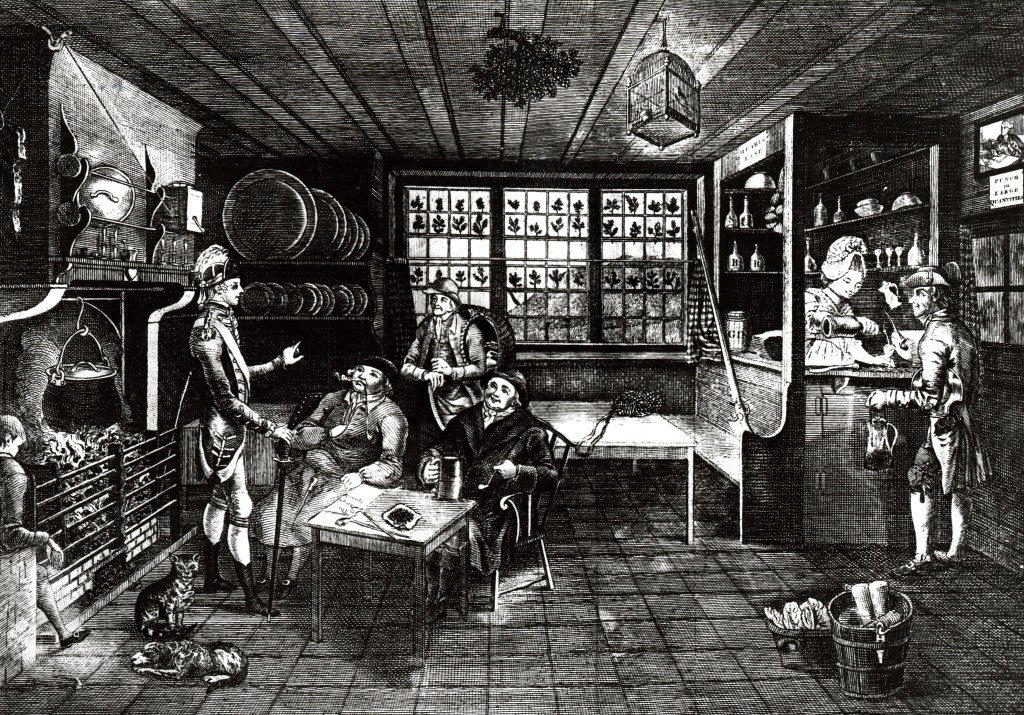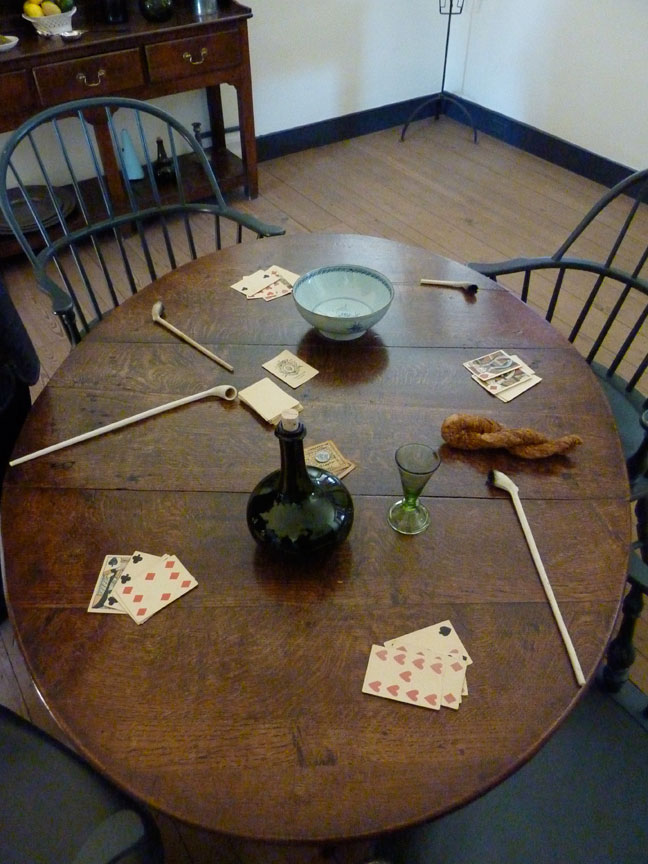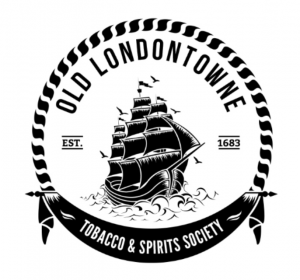What Is London Town?
Created in 1683 by the colonial Maryland legislature, London Town or Londontowne as it is also known, became an important tobacco port and a major player in the colonial trans-Atlantic trade network. It also served as an important ferry crossing on the main north-south route in the colonies, connecting Charleston, South Carolina with Boston, Massachusetts. The town was laid out on 100 acres, overlooking the South River, a tributary of the Chesapeake Bay. Roads were created, including Scott, Mackelfish, and Fish Streets among others. And 100 one-acre lots were platted. As a center of transportation and trade, London Town reached its heyday in the 1720s, rivaling nearby Annapolis in terms of economic activity. Merchants, planters, carpenters, and coopers were important to the tobacco trade. They all either lived or owned property in London Town, as did tailors, tavern-keepers, ferry-masters, mariners, ropemakers, blacksmiths, as well as indentured servants, convict servants, and slaves. The Anne Arundel County courthouse was located in London Town from 1685 until 1695, when the court moved to Annapolis, including the cage, whipping post, stocks and pillory.
Make no mistake, London Town was a product of its time. As a port town, there was plenty of unsavory activities — brothels, gambling, hard drinking and more — going on as part of what made up daily life in that time and place.
The prominence of London Town began to fade in the mid-1700s and with the lack of trade during the American Revolutionary War, the port town simply could not survive. Once a vibrant town, consisting of 30 to 40 occupied lots and an estimated population of 300 people, London Town began to disappear from the landscape. Only a few buildings lasted into the 20th century, one of which is the impressive brick building, known as the William Brown House, built circa 1760 as an upscale tavern for travelers crossing the South River by ferry boat.
London Town is considered, to a large extent, to be one of colonial America’s “lost cities.” While there is some history and evidence of London Town’s past prominence, time was fairly unkind to it’s one time greatness.
Today, Historic London Town & Gardens park consists of one-quarter of the original 100-acre town. Beneath the ground throughout the park, there is evidence of the generations of men, women and children who lived their lives on the shore of the beautiful South River.
Pipes & London Town
Pipes in the sense that they are seen now were not developed until the 1500′s. Prior to that, stone was a popular substance that was used to hold tobacco, herbs, opium, and other substances. In addition, materials like corncobs and even gourds were used as the bowl of a pipe. Many older pipes that have been unearthed were carved in ornate shapes but still retained a rounded inner bowl (which is easier to make, clean and maintain than an angled surface) to hold the smoked substance.
Tobacco reached Europe in the late 15th century / early 16th century after Columbus navigated to the New World and back, but it was not until around the time of the Thirty Years War (1618-1648) that pipe smoking gained recognition throughout Europe. While cigars were also brought to Europe during that time frame, pipe and snuff use were the preferred method of tobacco use until much later in the 18th century and forward.
Just about every material known to man has been used to fabricate a pipe over the millennia. Stone, clay, metal, ceramic proved to be noncombustible in ancient times as dried tobacco was burned. As pipe smoking was refined, other materials found their way into pipe making. Refinements in the curing, blending and storage of tobacco produced a product that retained its essential oils and produced a more flavorful experience to the smoker.
During the early days of the London Town settlement, smoking tobacco would have been placed in a clay or dudeen (Irish) pipe. At this time the clay pipe was seen as a disposable item as they were very fragile and did not travel well. It was not uncommon to find a Tavern or Hospitality pipe left on the table for the next smoker. A small piece of the stem may have been broken away by the next user, although there wasn’t much knowledge of germs in early colonial times. Clay pipes were pretty much phased out with more permanent models taking over as more resilient materials were found, although they remained popular up through the Civil War.
Around 1720 Meerschaum, meaning “sea foam,” is discovered in Turkey and becomes the highest regarded pipe material. And, around 1840, dense briar wood pipes rose out of Jura, France and gained a foothold as they were much more resilient than the more fragile Meerschaum, clay and ceramic versions which predated them. In 1869, a Dutch immigrant woodworker named Henry Tibbe first began production of the corn cob pipe in Washington, Missouri. Legend has it that a local farmer whittled a pipe out of corn cob and liked it so much he asked Henry Tibbe to try turning some on his lathe.
Today, there are a wide spectrum of materials being used to make tobacco pipes — everything from the lowly corncob through the painstakingly hand-carved Meerschaum and briar — are used to create pipes that are first, functional and, in some cases, true works of art. If you can somehow fashion a hole in which to place the tobacco and a stem through which to draw the smoke, it can be called a pipe.
Reviving The Tradition
As time has been somewhat unkind to historic London Town, it too has proved to be unkind to the smoking of pipes and cigars. Since it found it’s way to Europe after Columbus, tobacco use has been an extremely polarizing topic. Soon after its introduction to the Old World, tobacco came under frequent criticism from state and religious leaders.
Today’s smoking bans and draconian taxes have nothing on the tobacco temperance movements of the past. During the Spanish Inquisition, tobacco was known as “Devils Weed.” James VI and I, King of Scotland and England, produced the treatise A Counterblaste to Tobacco in 1604, and also introduced excise duty on the product. Murad IV, sultan of the Ottoman Empire 1623-40 was among the first to attempt a smoking ban by claiming it was a threat to public morals and health. The Chinese emperor Chongzhen issued an edict banning smoking two years before his death and the overthrow of the Ming dynasty. Later, the Manchu of the Qing dynasty, who were originally a tribe of nomadic horse warriors, would proclaim smoking “a more heinous crime than that even of neglecting archery”. In Edo period Japan, some of the earliest tobacco plantations were scorned by the shogunate as being a threat to the military economy by letting valuable farmland go to waste for the use of a recreational drug instead of being used to plant food crops.
Anti-smoking movements, coupled with innovations in smoking technology such as the cigar and cigarette, left pipe smoking as a niche hobby at best in much of the world. But, despite all that has worked against it, the simple elegance of drawing a puff from a pipe has survived and still lives on today.
As the taverns and public house of Old London Town featured nightly pipe and cigar smoking, drinking and conversation, we feel like we’re simply reviving an old tradition rather than starting something brand new!
OLD LONDONTOWNE TOBACCO & SPIRITS SOCIETY
The Old Londontowne Tobacco & Spirits Society (“The Society”) is a social group and was formed (or re-formed if you believe the history of the area) to promote the hobby of pipe and cigar smoking, the enjoyment of fine spirits, protect and perpetuate the over 300 year old historic traditions of pipe and cigar smoking and aid in pipe and cigar collecting in and around the Annapolis / Baltimore / Washington area.
MEETINGS OF “THE SOCIETY”:
Generally, Thursday evenings, Chesapeake Pipe & Cigar opens its doors to “The Society” as a whole. Some Thursdays, we have a formal meeting and program, while others are much more casual. With the exception of Thanksgiving and other major holidays that fall on Thursday, we meet and celebrate our rights, privileges and traditions, each in our own way.
On occasion, we hold additional meetings on other days of the week as the mood strikes, For the most up to date information about “The Society,” visit our FACEBOOK page OR stop by Chesapeake Pipe & Cigar.
